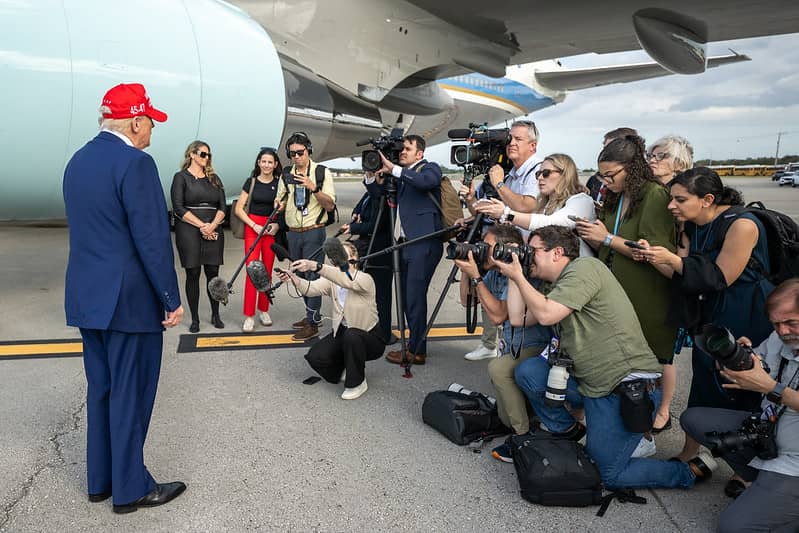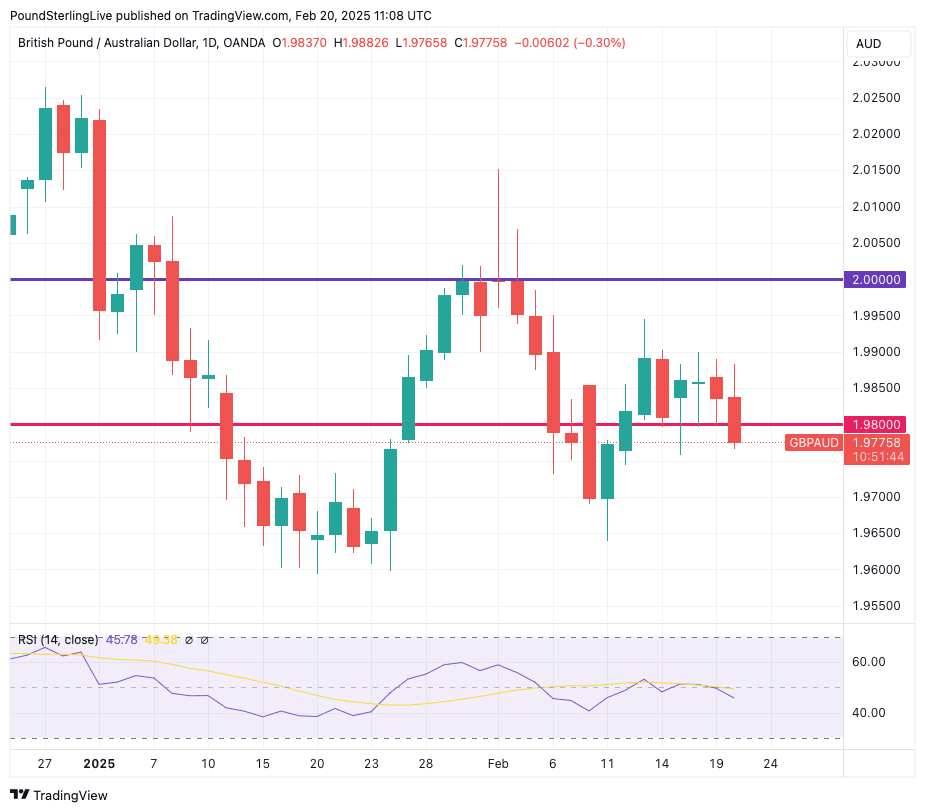
Image: The White House.
The Australian Dollar advanced against most peers in the wake of news that the U.S. was open to striking a new trade deal with China, further diminishing the risks of a damaging trade war.
Risk-on assets, including the Australian Dollar, rose after U.S. President Donald Trump expressed openness to negotiating a new trade agreement with China.
"The AUD is often seen as a proxy that traders use to express their views on China, given our tight trade relationship and deep, liquid FX market," says Luci Ellis, Chief Economist at Westpac Group. "To the extent that the outlook in China has genuinely worsened, the exchange rate depreciated."
On February 19, 2025, he stated that such a deal is "possible," signalling a potential shift in the ongoing trade tensions between Washington and Beijing.
This comes after the Trump administration imposed a 10% tariff on all Chinese imports earlier this month, citing concerns over trade imbalances and other issues.
In response, China imposed limited tariffs and sanctions but has since indicated interest in resuming negotiations, with reports suggesting that Beijing may propose reinstating the 2020 "Phase One" trade deal.
This agreement originally required China to increase its purchases of American goods and services by $200 billion over two years, though it was never fully implemented.
Speaking to reporters aboard Air Force One, Trump described the previous agreement as "a great trade deal with China" and a new deal as "possible."
Asked about the comments, Beijing's foreign ministry said Thursday the two countries should handle trade tensions with "mutual respect."
The developments further eliminate the tail risk of a fully fledged trade war between the two countries that would have negatively impacted the Australian economy and its currency.
On Thursday, the Australian-U.S. Dollar exchange rate rallied to its highest level in over two months, reaching a high of 0.6380.
The Pound-Australian Dollar exchange rate broke through a technical interim floor to engage a near-term downtrend, taking in a new one-week low of 1.9765.
Above: GBPAUD at daily intervals showing a near-term breakdown is underway.
The Aussie was bolstered earlier this week by the Reserve Bank of Australia's decision to cut interest rates but warned the move was not necessarily the start of a genuine cutting cycle.
This disappointed market participants, where expectations saw up to three more cuts coming this year.
The reappraisal bolstered Australian yields relative to elsewhere, in turn supporting the Aussie Dollar.
"Bullock's comments were purposely hawkish and pushed CIO Forecast back directly on more aggressive market pricing of rate cuts. We believe the RBA will cut just once more in 2025 (May or August), for a total of 50 basis points," says Wayne Gordon, Strategist at UBS.
Gordon says current levels in the Australian Dollar reflect the more dovish rate pricing environment alongside elevated risks of a deeper trade conflict between the U.S. and China.
"As we see fewer cuts and potential for upside surprises to Australian and Chinese growth prospects vs consensus, this should drive the AUDUSD higher over the next 12 months," he explains.

